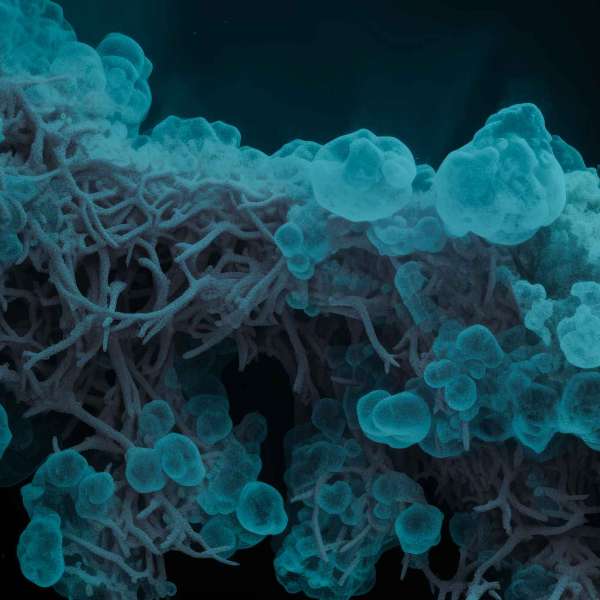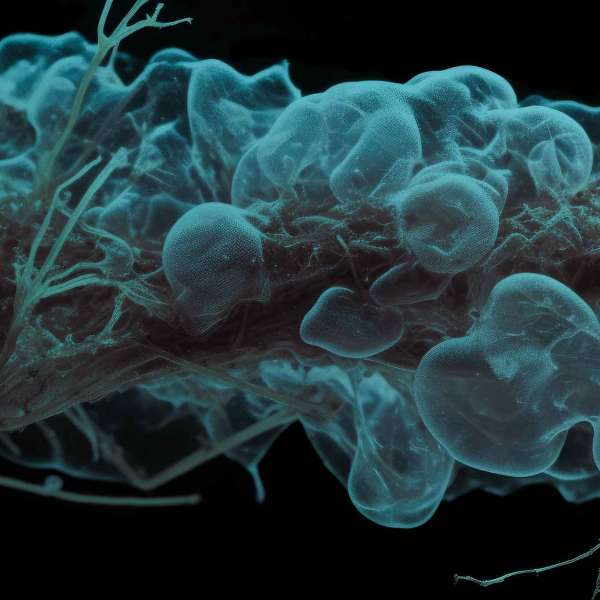
AMCIPATRICIN diascorbate (code SPK-843) is a new semi-synthetic, water-soluble polyene antibiotic, with potent broad-spectrum antifungal activity, particularly against Candida spp., Cryptococcus sp., and Aspergillus spp.
Epidemiology of systemic fungal infections:
Fungal diseases are a public health issue: opportunistic infections (e.g., cryptococcosis and aspergillosis), hospital-associated infections (e.g., candidiasis), and community-acquired infections pose an important threat to public health1. Globally, over 300 million people are afflicted with a serious fungal infection, and 25 million are at high risk of dying or losing their sight2.
Mode of action:
Like other polyenes, the broad spectrum antifungal activity of AMCIPATRICIN is based on the destabilization of the cell membrane of sensitive organisms (Ergosterol binding partricin agent). The main mechanism of action is the reaction with sterols of the cell membrane, which causes a leakage for low-molecule cytoplasmic ingredients. The intracellular balance is then disturbed, ending up finally in cell extinction.
NON-CLINICAL data:
Extensive non-clinical data are available on AMCIPATRICIN and its salt with ascorbic acid.
- Single dose toxicity (Rats),i.v.
- Single dose toxicity (Cynomolgus Monkeys), i.v.
- Single dose nephrotoxicity (Rabbits), i.v.
- Repeated dose (2 weeks) toxicity study (Rats),i.v.
- Repeated dose (4+4 weeks recovery) toxicity (Rats),i.v.a
- Repeated dose (2 weeks) toxicity (Cynomolgus Monkeys) i.v.b
- Repeated dose (4 weeks) toxicity (Cynomolgus Monkeys) i.v.c
- Repeated dose (2 weeks) nephrotoxicity study in (Rabbits), i.v.
- Repeated dose (13+4 weeks recovery time) toxicity (Rats), i.v., vs. AmpB
- Reproductive toxicology: Fertility and Early Embryonic Development (Rats), i.v.
- Reproductive toxicology: Study of embryo-fetal development (Rats)
- Genotoxicity: chromosomal aberrations (Chinese hamsters)
- Genotoxicity: Peripheral blood micronucleus test (Mice), i.v.
- Mutagenesis: bacterial reverse mutation assay (Ames test)
- Vascular Irritation Study (Rabbits), 14 days, i.v.
- Effects on action potential of right ventricular papillary muscle (Guinea pigs)
a. Vehicle: Glucose and Intralipid - b. Vehicle: Intralipid - c. Vehicle: Glucose
d. Lung fibroblast cells
NON-CLINICAL Safety Pharmacology Studies:
Safety Pharmacology Study compared to other polyene (general signs and behavior, CNS, autonomic nervous system and smooth muscles, peripheral nervous system, gastrointestinal system, cardiovascular system and the respiratory system, water and electrolyte metabolism, blood, pyrogenic effect in rabbits).
NON-CLINICAL Efficacy Pharmacology Studies
- Candida albicans (Rats)
- Pulmonary aspergillosis (Mice)
- Cryptococcal meningoencephalitis (Mouse)
- Pharmacokinetics after multiple doses (4 weeks) i.v. (Rats)
Proven in-vitro antifungal activity against:
- Candida spp (albicans, glabrata, tropicalis, krusei, guilliermondii, kefyr, parapsilosis, stellatoidea, utilis, clinical isolates of Candida auris)
- Non-Candida yeast tested (Cryptococcus neoformans, C. laurentii, Saccharomyces cerevisiae, Trichosporon beigelii, Rhodotorula pilimanae)
- Filamentous fungi (Aspergillus spp., Paecilomyces variottii, Penicillium spp.,Sporothrix schenkii, Mucor sp., Rhizopus oryzae, Microsporum spp., Trichophyton spp.)
Human clinical studies:
Phase I Studies
- A Single Ascending Dose Pilot Study in Healthy Adult Males (i.v.)
- Human Pharmacology Study with Repeated Dose (14 days) by (i.v.) in Healthy Male Volunteers
Phase II Studies
- Efficacy, safety, and PK in patients with deep mycosis (chronic, necrotizing pulmonary aspergillosis and pulmonary cryptococcosis) (Exploratory study: multicenter, open-label, uncontrolled, i.v.)
- An open-label, dose-escalation pilot study to investigate the safety and efficacy of SPK-843 (AMCIPATRICIN) i.v., in treating esophageal candidiasis in HIV-infected patients.
Main overall outcomes:
- Relative acute toxicity in mice, rats, and monkeys is lower than in other polyenes.
- 13-week toxicity study: no evidence of serious nephrotoxicity even at the highest dose (5 mg/kg).
- Non-toxic dose level: 0.2 mg/kg b.w. in rats (13-week i.v. toxicity study)
Potential Applications:
- Fungal asthma treatment
- Candidiasis – Invasive candidiasis treatment
- Aspergillosis – Invasive aspergillosis treatment
- Allergic bronchopulmonary aspergillosis (in cystic fibrosis) treatment
- HIV esophageal candidiasis treatment
- Hospital infections treatment
- Community acquired infections
Publications
- Bonabello A, Galmozzi MR, Buffa G, Bruzzese T. Pharmacokinetics in rodents of a new semisynthetic polyene antibiotic (SPA-S-753) for systemic use. Int Congr Pharmacol. 1994;12 P.12.2.23.
- Bruzzese, T., M. R. Galmozzi, V. M. Ferrari, P. Sala, and A. Bonabello.2001. Comparative pharmacokinetics of three preparations of the new antifungal SPK-843. Chemotherapy 47:387-395.
- Bruzzese, T., M. R. Galmozzi, G. Buffa, P. Sala, and A. Bonabello.2001. Pharmacokinetics in rats of N-dimethylaminoacetyl-partricin A2-dimethylaminoethylamide diascorbate (SPK-843). Chemotherapy47:77-85.
- Bruzzese T, Rimaroli C, Bonabello A, Signorini M. Amide derivates of partricin A with potent antifungal activity. Eur J Med Chem. 1996;31:965–972.
- Hiroshi Kakeya, Yoshitsugu Miyazaki, Hisato Senda, Tsutomu Kobayashi, Masafumi Seki, Koichi Izumikawa, Kazunori Yanagihara, Yoshihiro Yamamoto, Takayoshi Tashiro, and Shigeru Kohno 2008 Efficacy of SPK-843, a Novel Polyene Antifungal, in Comparison with Amphotericin B, Liposomal Amphotericin B, and Micafungin against Murine Pulmonary Aspergillosis- American Society for Microbiology Antimicrobial Agents and ChemotherapyVolume 52, Issue 5, May 2008, Pages 1868-1870
- Izumikawa K, Senda H, Miyazaki Y, Morinaga Y, Kobayashi T, Ohno H, Yanagihara K, Higashiyama Y, Hirakata Y, Tashiro T, Kohno S. Efficacy of SPK-843, a novel polyene antifungal, in murine pulmonary aspergillosis in comparison with amphotericin B and micafungin. Icaac. 2004;44 Abs F-850.
- Kakeya H, Miyazaki Y, Senda H, Kobayashi T, Seki M, Izumikawa K, Yanagihara K, Yamamoto Y, Tashiro T, Kohno S. 2008 Efficacy of SPK-843, a novel polyene antifungal, in comparison with amphotericin B, liposomal amphotericin B, and micafungin against murine pulmonary aspergillosis. Antimicrob Agents Chemother. 2008 May;52(5):1868-70. doi: 10.1128/AAC.01369-07. Epub 2008 Feb 25.
- Kakeya H, Miyazaki Y, Senda H, Kobayashi T, Seki M, Izumikawa K, Yamamoto Y, Yanagihara K, Tashiro T, Kohno S. 2008 Efficacy of SPK-843, a novel polyene antifungal, in a murine model of systemic cryptococcosis. Antimicrob Agents Chemother. 2008 May;52(5):1871-2. doi: 10.1128/AAC.01370-07. Epub 2008 Feb 25.
- Kantarcioglu, A. S., A. Yucel, and V. Vidotto.2003. In vitro activity of new polyene SPK-843 against Candida spp., Cryptococcus neoformans, and Aspergillus spp. clinical isolates. J. Chemother.15:296-298.
- Kohno S, Miyazaki Y, Izumikawa K, Morinaga Y, Kobayashi T, Ohno H, Yanagihara K, Higashiyama Y, Hirakata Y, Tashiro T. Efficacy of SPK-843, a novel polyene antifungal in a murine model of systemic cryptococcosis. Icaac. 2004;44 Abs F-848.
- Luna T, Mazzolla R, Roman'o G, Blasi E. Potent antifungal effects of a new derivative of partricin A in a murine model of cerebral cryptococcosis. Antimicrob Agents and Chemother. 1997;41(3):706–708. [PMC free article]
- Mozzi G, Benelli P, Bruzzese T, Galmzzi MR, Bonabello A. The use of lipid emulsions for the in-vitro administration of new water-soluble polyene antibiotic SPK-843. J Antimicrob Chemother. 2002;49(2):321–325. [PubMed]
- Rimaroli C, Bruzzese T. In vitro activity of a new polyene, SPA-S-843, against yeasts. Antimicrob. Agents and Chemother.998;42(11):3012–3013.
- Rimaroli C, Bruzzese T. Overview of SPA-S-843 in vitro activity against filamentous fungi. Chemotherapy. 2000;46(1):28–35. [PubMed]
- Rimaroli C, Bonabello A, Sala P, Bruzzese Pharmacokinetics and tissue distribution of new partricin A derivative (N-dimethylamino particin A2-dimethylaminoethylamide aspartate) in mice. J Pharm Sci. 2002;91(5):1252–1258. [PubMed]
- Senda, H., T. Maejima, Y. Konishi-Watanabe, Y. Tatsumi, and M. Yokoo.2000. SPK-843, a new polyene antibiotic with potent in vitro activity and strong fungicidal effect. Abstr. 40th Intersci. Conf. Antimicrob. Agents Chemother., abstr. 1093.
- Senda H, Tatsumi Y, Watanabe Y, Yokoo M, Ishiyama D. In vitro and in vivo eradicative efficacy of SPK-843 on Candida albicans. Icaac. 2004;44 Abs F-849.
- Sesoko S, Michigami I, Umemura K, Nakashima M, Sesoko S, Sesoko S. Pharmacokinetics (PK), safety, and tolerability of SPK-843ID in healthy Japanese males. Icaac. 2003;43:A-1570.



